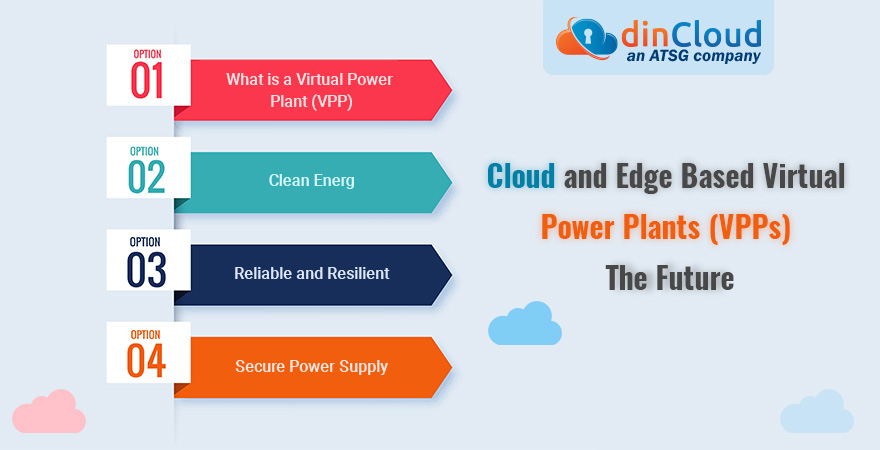With globally rising temperatures as a direct consequence of global warming and climate change, power is becoming a scarce resource. What makes matters even more complicated is the constantly increasing demand for electricity.
No matter how much electricity you may be able to produce via power plants, you need a sound and reliable power grid for its transmission. As soon as the power grid gets overburdened, it snaps, cutting power supply to hundreds or thousands of users.

During the year 2021, some fault lines within the American power generation and transmission system became well known. In the June of 2021, this is exactly what happened to the power sector within Texas, leaving 69% of the residents without power.
In this post, we will discuss the concept of Virtual Power Plants (VPP), along with the factors that make them a great source of clean, reliable and secure power.
Related: How is Cloud Computing Re-Shaping Accounting Firms and Professionals?
What is a Virtual Power Plant (VPP)
To grasp the concept of a Virtual Power Plant (VPP) more effectively, you will first have to visualize a traditional power plant that may be powered by a nuclear reactor, gas or coal. It is a single, huge structure that spans a lot of area and gobbles up huge sums of money.
The concept of VPPs is the exact opposite. Instead of going for a single, huge and costly power producing plant, why not go for a large number of smaller power sources and connect them seamlessly via digital technologies like the Cloud.
Now, let us discuss some of the key benefits of VPPs, when this promising technology starts to take formal shape and benefit the millions of power consumers globally.
Related: How Should Businesses Gear-Up for Hyper Innovation?
Clean Energy
Most of the greener sources of power have been facing one stiff criticism, which is their lower efficacy. You need lots of solar or wind powered units to produce the power for a large population. This is normally not possible due to a wide range of constraints.
By aggregating these smaller energy sources into decently sized Virtual Power Plants (VPP), and integrating them seamlessly with technologies like Cloud and Edge Computing, the goal of producing greener electricity seems closer than ever.
Reliable and Resilient
When the power grid at the state or national level would be integrated via the Cloud, it would become much easier to perform load management. In short, this process would include transmitting power from lower demand areas to the peak demand regions.
This is a winning situation for all the stakeholders involved. The producers will get their money’s worth, as their excess power is being sold / consumed in some other region with a heightened demand.
The power consumers, on the other hand, will be able to enjoy un-interrupted power supply during the times of peak demand. This in turn will limit, and maybe eliminate, the power outages arising due to sudden or seasonal spikes in the demand for power.
Related: How are Cloud and Tech Reviving the Travel Industry?
Secure Power Supply
When we talk of a secure power generation and transmission mechanism, we are not just referring to the safety bit. Notwithstanding its due importance, the security that we are talking of, relates to cyber security.
The recent hack of Colonial Pipeline resulted in halting of the supply of gasoline and jet fuel across a large region within the US. The company got around this breach by paying a hefty ransom to the very perpetrators of the cyber attack.
By taking the management bit of power supply over to the Cloud and Edge, both power producing as well as distribution companies will have a much more robust cyber security in place. As a result, disruptions caused by data breaches or hacks might be fully ruled out.
Related: Cloud Computing Powered Agriculture – Sustainable and Greener
Conclusion
With astronomically rising numbers of digital devices powering the different aspects of our daily lives, the demand for power is likely to rise even further. There is also “a new kid on the block”, electric vehicles (EVs).
The rapid proliferation of EVs, backed by government incentives to both producers and consumers, we will witness an even steeper rise in the demand for electricity. With the help of Virtual Power Plants (VPPs), the Cloud and Edge Computing, this will be much easier.
In the power grid of the near future, the role of the Cloud and Edge will be that of an integrator or enabler. VPPs, Edge and Cloud will take us one step closer towards greener, reliable and safer means of producing as well as transmitting electricity.
Feel free to reach out dinCloud for cloud solutions that are reliable, secure and cost efficient.


